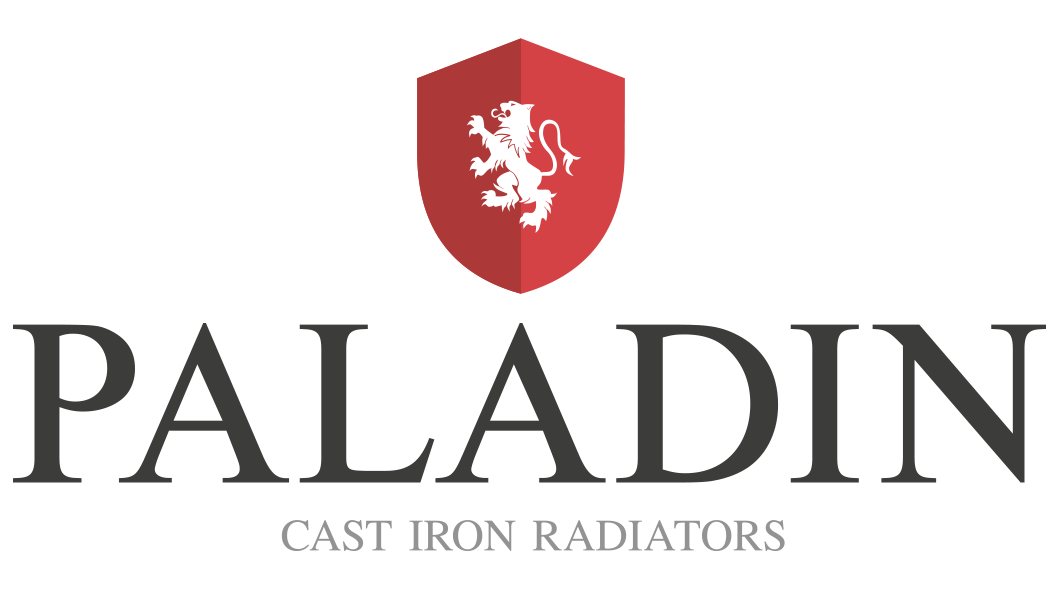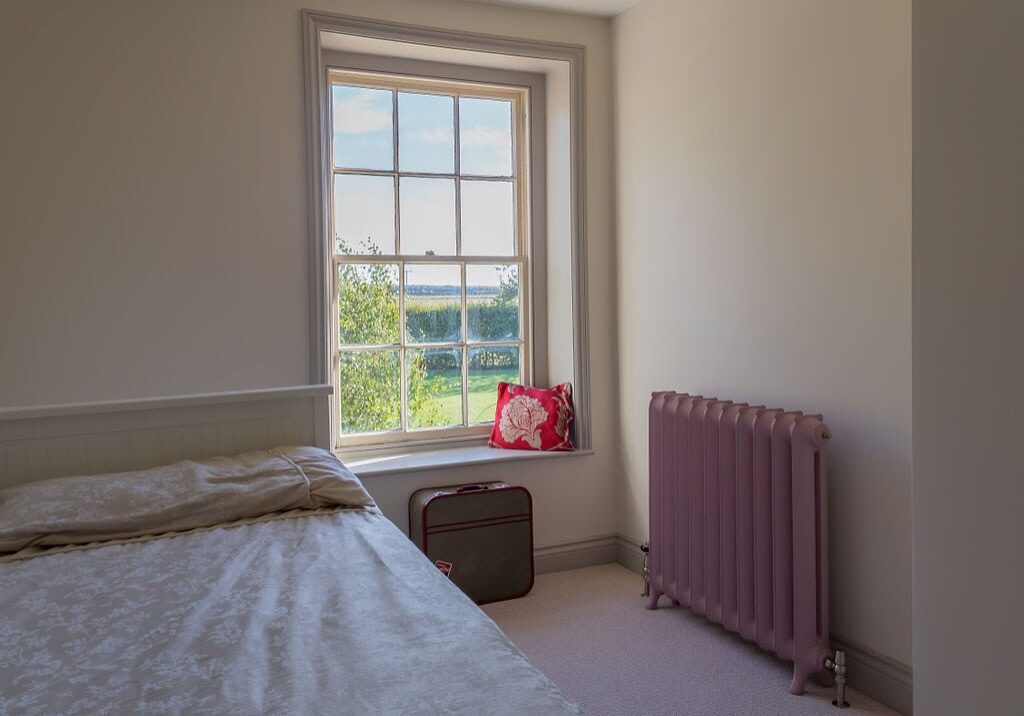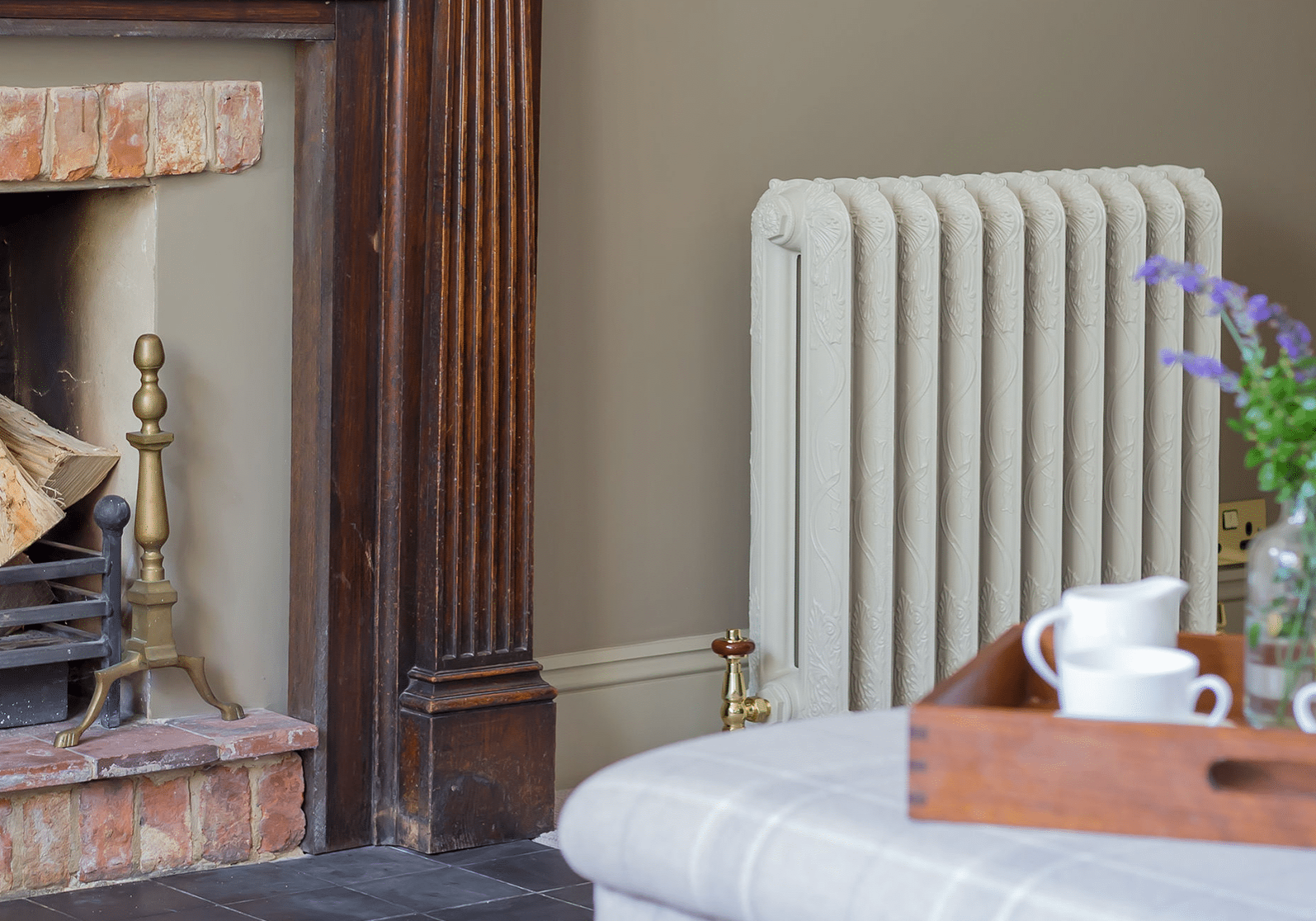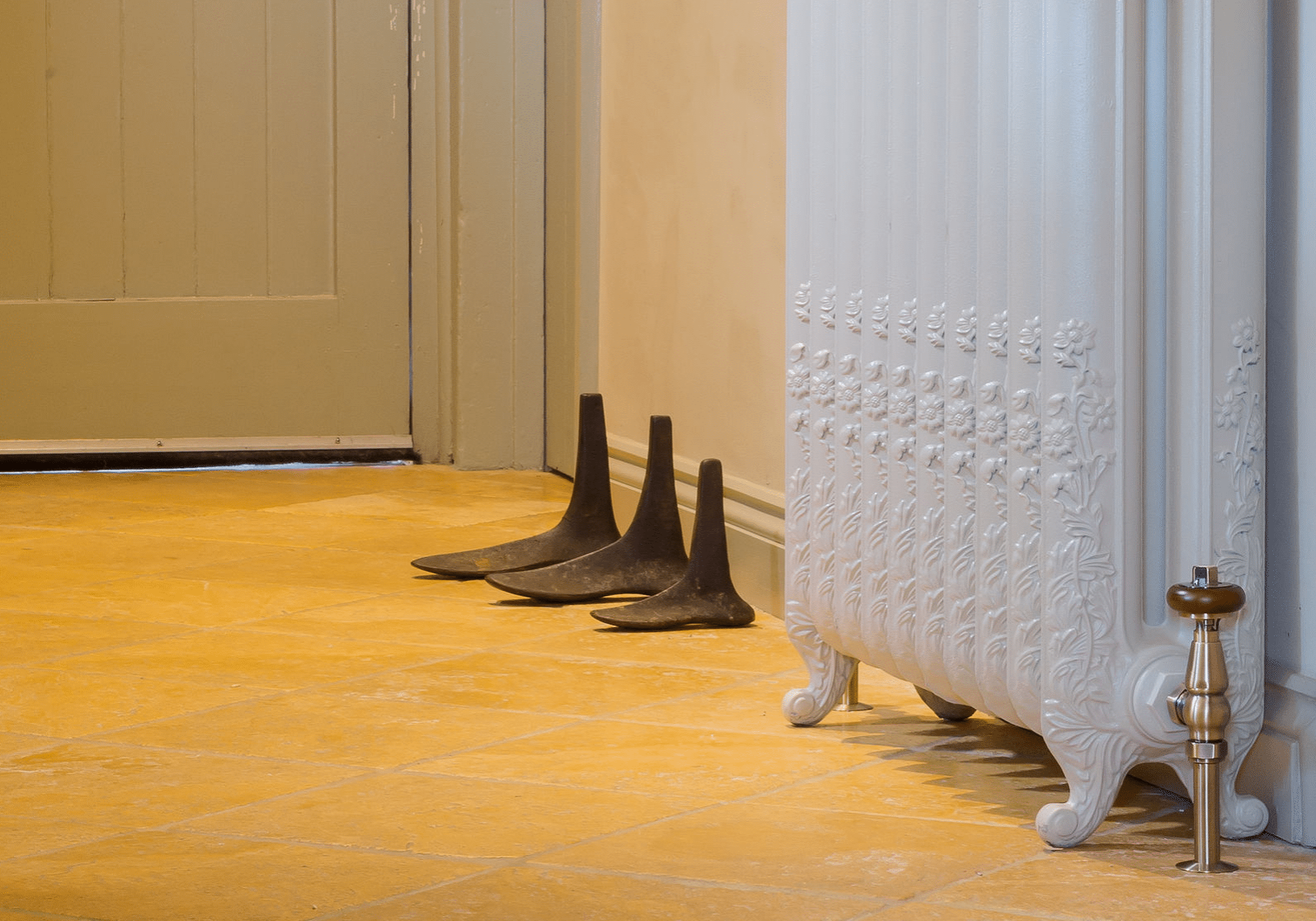How To Get The Most Out Of Your Cast Iron Radiators
A cast iron radiator isn’t just any old heating device. It’s a reliable, robust friend who’s always there to keep you warm on the coldest days.
How are cast iron radiators made?
The magic starts in the foundry where iron is heated until it’s as liquid as your morning coffee. The molten metal is then pressed or cast into moulds shaped for each section of the radiator. Once cooled down, these sections resemble something out of a Victorian engineer’s dream: heavy-duty yet elegantly designed pieces ready to stand guard against winter chills.
These individual sections are joined by double handed screws (joining nipples) to form one sturdy unit ready to heat your space efficiently.
Do cast iron radiators have special fluid inside?
Cast iron radiators work through hot water running through their pipes and need to have a protective rust inhibitor present in the heating system.

Maximising the efficiency of your cast iron radiator
How efficient are cast iron radiators?
The Victorians knew how to create objects that were practical as well as being great to look at. When you think of a traditional radiator, decorative shapes readily spring to mind. So if you’re hoping to retain the character of your period property, cast iron radiators are an obvious choice.
Cast iron radiators deliver an excellent heat output and provide an impressive distribution of warmth across the entire surface area of a room.
If your home’s heating system includes cast iron radiators, it’s advisable to switch them on in advance of when you need your room heated but, rest assured, they’ll continue offering respectable warmth even after being turned off – much more than their modern counterparts do.
Tips for improving the efficiency of your cast iron radiators
- Radiation and convection: Remember, these beauties also work by radiation – keeping curtains or furniture away from them helps maximise their effectiveness.
- Pipe sleeves and cap valves: Slipping on pipe sleeves and installing cap valves will boost the visual appeal and also enhance efficiency without sacrificing flair.

Maintaining your cast iron radiator
With just a few tweaks and regular maintenance checks, like ensuring there’s no dust buildup which could act as insulation, you’re all set for cosy evenings in front (or beside) an iconic piece that truly stands out in functionality and aesthetics.
How to clean a cast iron radiator
First things first, make sure your radiator is cool. We don’t want any singed fingers here. Once it’s safe to touch:
- Vacuum with care. Use that brush attachment like you’re on a treasure hunt, exploring every nook behind and between those columns.
- Polish with a clean microfibre cloth to ensure a wonderful shine.
How often should you clean a cast iron radiator?
You might think these beauties need constant pampering – but guess what? They’re pretty low maintenance.
A simple weekly dust-off should do unless they live in high-traffic zones – then you might want to up the ante just a tad more frequently. But remember, it’s crucial to follow any specific guidelines given at purchase or fitting time.
Keeping up with regular maintenance
Caring for painted finishes? A gentle wipe-down with a damp cloth does wonders (just pop a towel underneath). And if your cast iron radiator boasts that shiny polished finish? Dusting becomes your new hobby. If it starts looking less like ‘shiny magazine cover’ and more like ‘I’ve seen better days’, reach for that polishing cloth (gently now), but steer clear of harsh cleaners unless you’ve double-checked they won’t tarnish the radiator’s character.

Optimising heat output with cast iron radiators
Cast iron radiators are the stars of home heating, blending warmth with style.
Why are they so effective? Cast iron beats steel for retaining heat, and more columns mean more surface area to spread warmth. Once they warm up, they create a blissful, long-lasting cosiness. Plus, they help save money on energy bills.
Other ways to minimise heat loss
- In rooms with higher ceilings or draughty windows, consider adding heavy curtains or thermal blinds.
- Treat your radiator and ensure its valves are in great condition.
- Make sure nothing blocks your radiators – sofas and chairs need their own spot away from this heated starlet.
A cast iron radiator in the right colour
Choosing the right colour for your cast iron radiator is like picking a piece of furniture that fits your room’s style. It’s important because you don’t want to redo it every time you change your decor. Here are some tips:
- Match with your room: Look at the colours already in your room. Are they warm or cool? Choosing a colour that contrasts can add interest, while matching colours create a harmonious feel.
- Consider custom options: Sometimes, standard colours may not be what you need. We offer a colour matching service where you can match a colour to your specific vision, ensuring it fits seamlessly with your existing decor.
- Think about your room’s style: Whether your room has a traditional Victorian look or a modern minimalist vibe, your radiator’s colour should match the overall aesthetic.
For further information on cast iron radiators, contact our friendly team on 01205 280354 or email us here.
FAQs in relation to how to get the most out of cast iron radiators
- How do you maximise heat from radiators?
Ensure that they remain unobstructed by furniture or curtains. Reflective panels behind them push the warmth back into the room.
- How do I get the most heat out of my radiator?
Dusting inside and between sections improves airflow and heating performance. Regular maintenance is key.
- What temperature should cast iron radiators run at?
Typically, most UK systems run at around 75°C flow temperature, unless using a heat pump.
“I want to say thanks and how fantastic the radiators look along with the cast quality and the excellent painting and polishing finish. I now can’t wait to get them installed! Many thanks again for all your help and assistance.”
“Thank you for all your help, we will definitely recommend Paladin to anyone we know who is looking for cast iron radiators and will get in touch when we’re needing radiators for our ground floor.”





